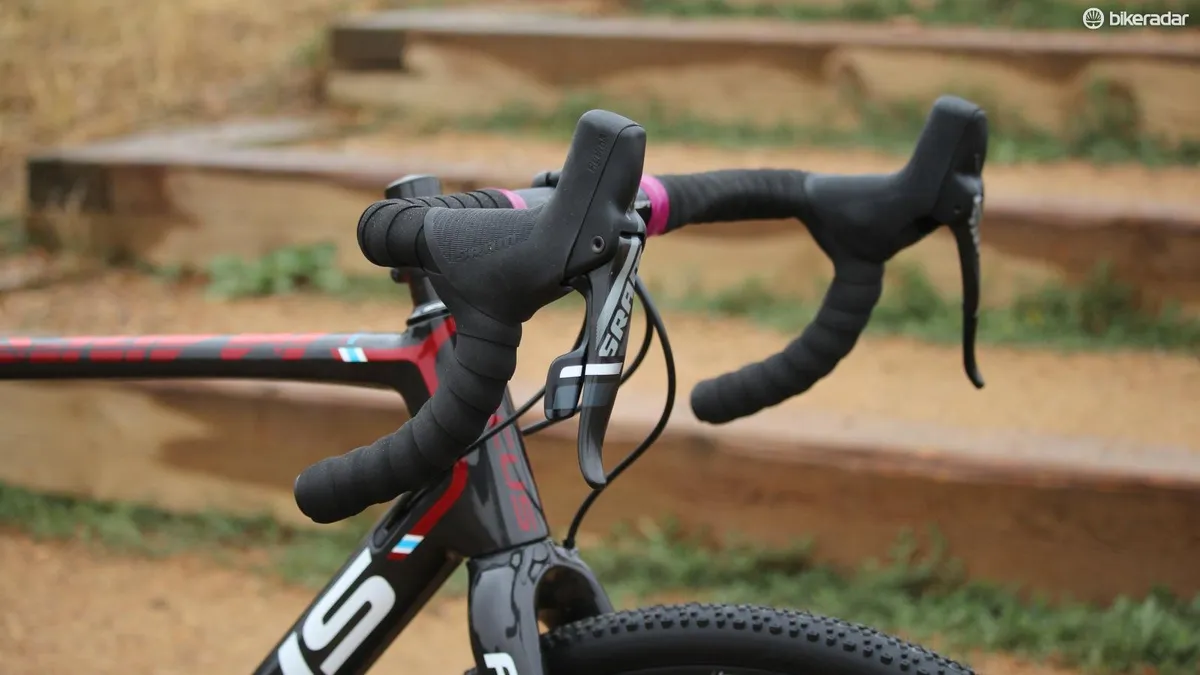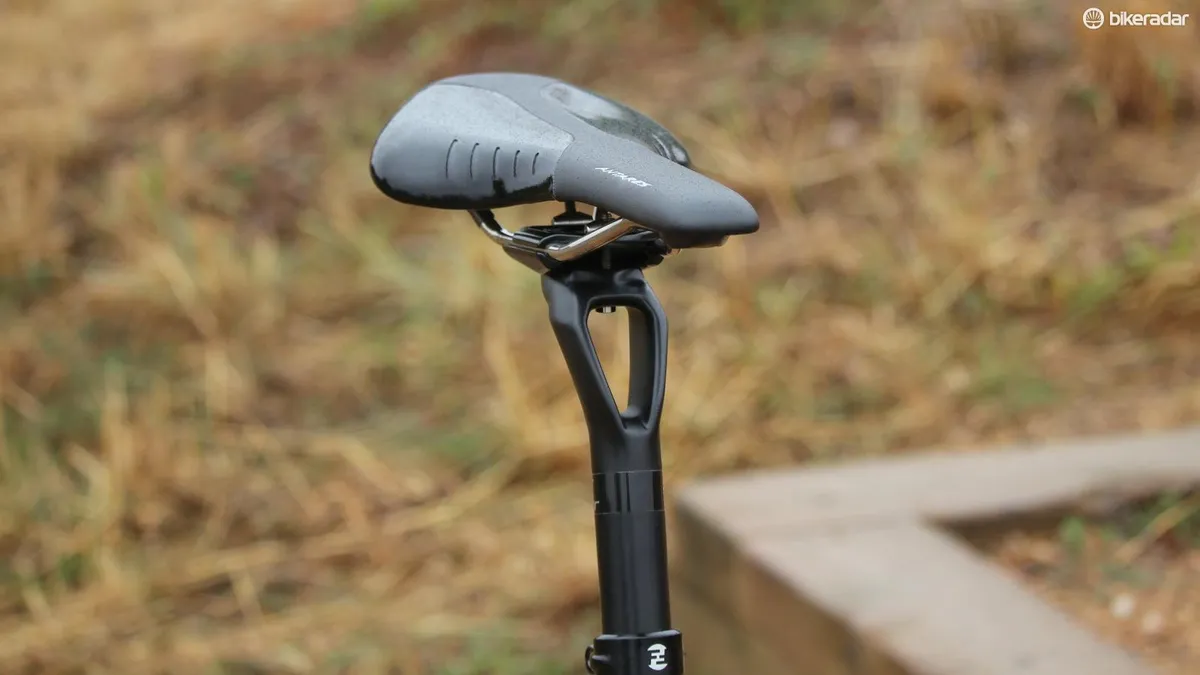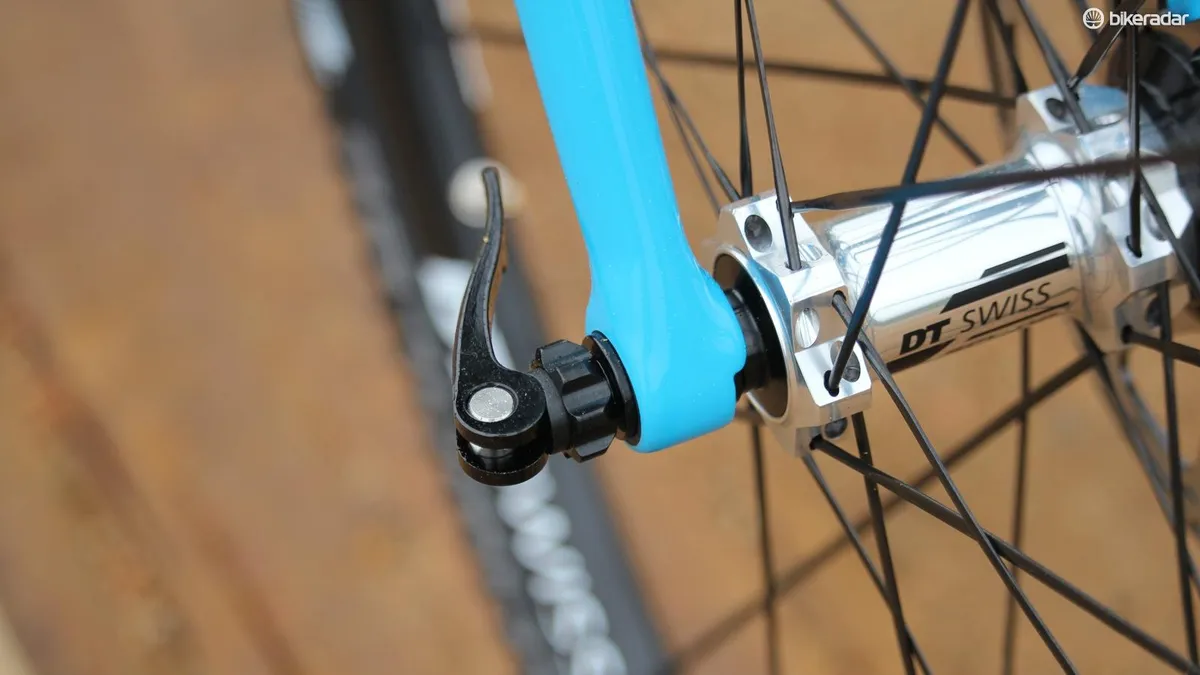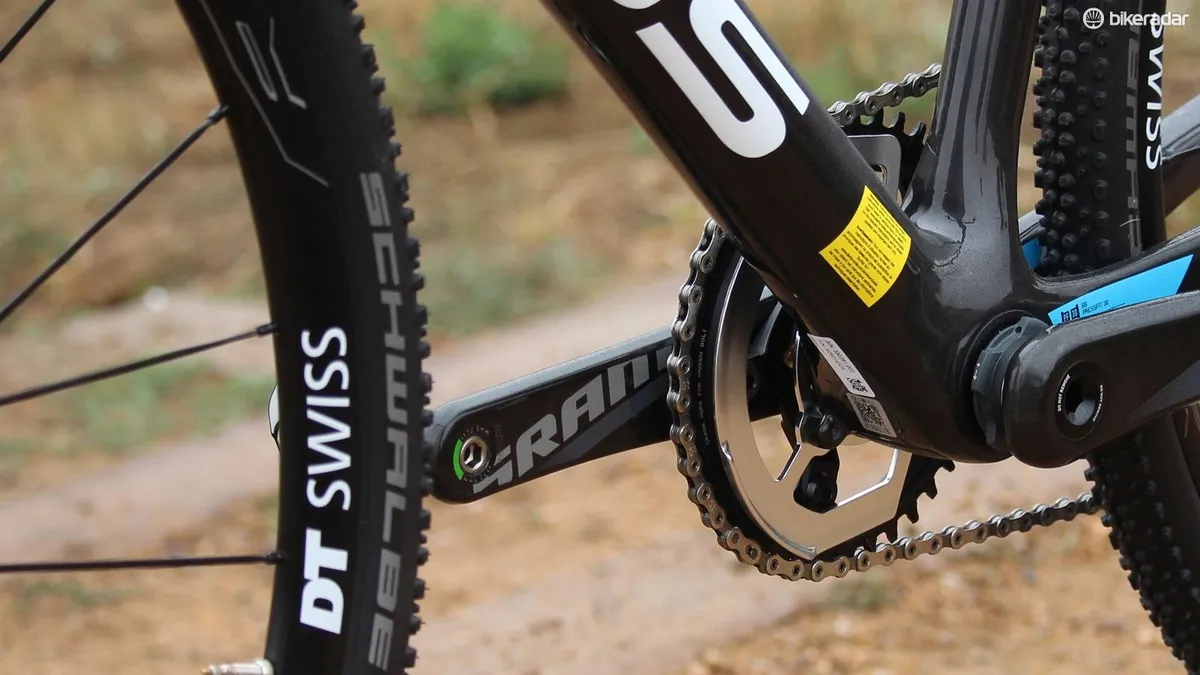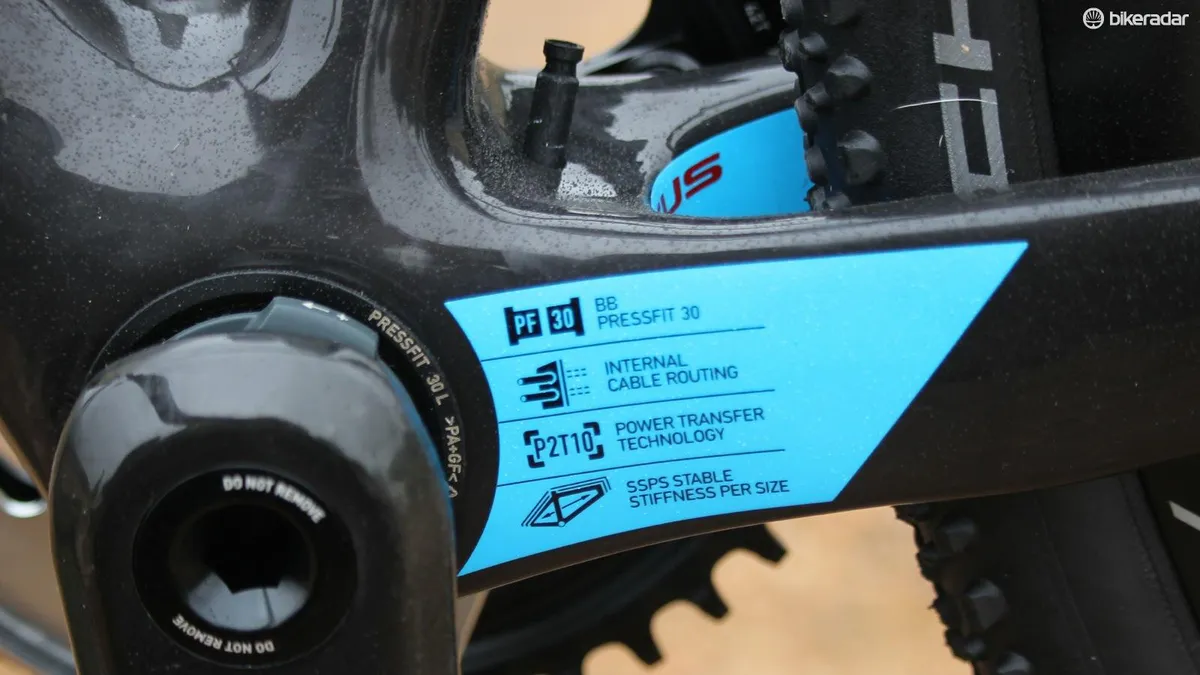For the silly sport of cyclocross with its somewhat schizophrenic equipment demands, the Focus Mares Force 1 is an excellent bike. It's stiff when you stomp on it out of corners, yet it damps rough chatter. It's old school in the short head tube, but new school in the relatively slack front end and execution of the latest technology. Plus, it has some cool features like RAT axles and internal routing. If you want a lively race bike that won't beat you up, the 2017 Mares Force 1 could be a great companion.
- Focus Bikes reviews and buying advice
- The best cyclocross bikes we've tested this year
- How to find the right tire pressure for cyclocross
While the road world continues to debate rim brakes versus hydraulics, it's pretty much a given in cyclocross. Yes, many Belgian pros still race on cantilevers, but for the rest of us, the vast improvement in brake performance makes it a no-brainer. What isn't settled, however, is exactly how said hydraulics will integrate with the bike. Should we use 12mm or 15mm thru-axles? (Some brands are still using quick releases.) Should we use 140mm or 160mm rotors? And should we commit to flat-mount brakes or stick with post-mount?
For 2017, Focus switched to flat-mount calipers, and plowed ahead with 160mm upfront with a 140mm in the rear and the German brand's distinctive RAT axles in a 12mm diameter.
Besides looking more integrated with the frame, flat-mount calipers make for better braking and less fiddling, as connecting parts are minimized. The larger front rotor (many brands argue that 140mm is plenty for ’cross) mean braking power is never a question.
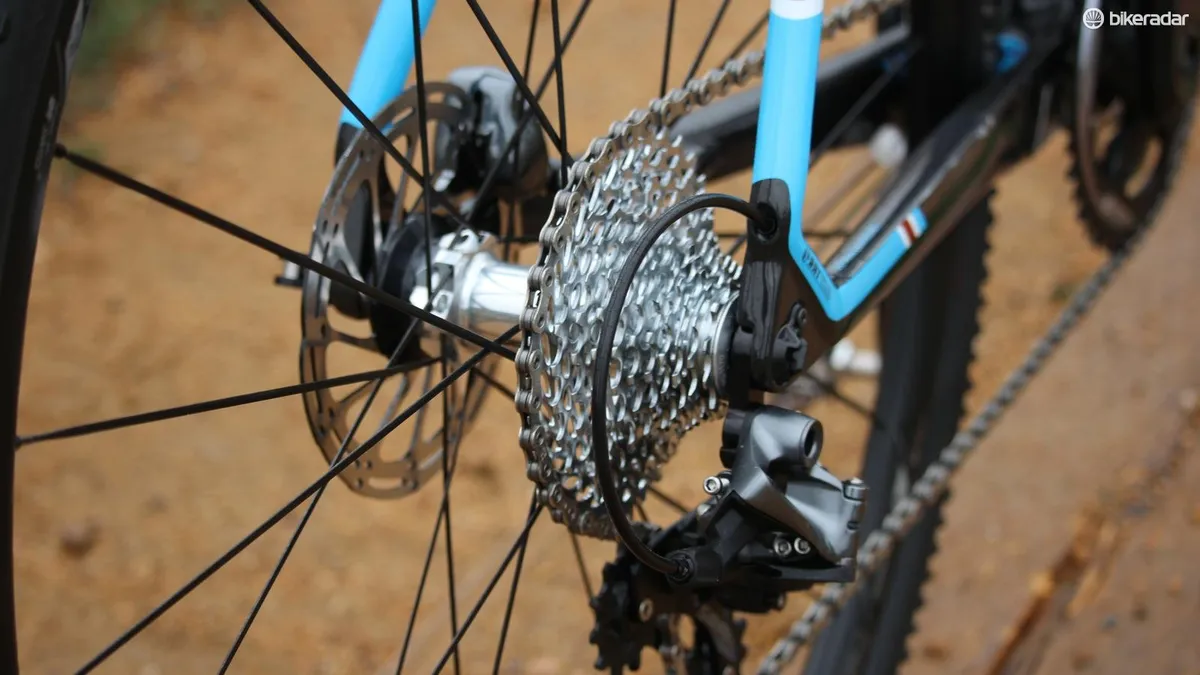
As for 12mm versus 15mm, honestly I couldn't feel a difference when Focus made the change to the smaller diameter from last year. I can say that we at BikeRadar are big believers in thru-axles for ’cross for the simple reason that your axle won't budge like it can on a quick-release bike. (Don't believe me? Slam that front wheel into a barrier at speed on a QR bike, get annoyed at the resulting rotor rub, and then get back to me.)
As for the fork and frame, Focus' carbon engineering delivers a light package that both accelerates eagerly and damps some vertical chatter
As for RAT (Rapid Axle Technology), what this means is a thru-axle design that just requires a quarter turn to engage or release in the frame or fork. (It works with any thru-axle compatible wheels, so don't worry about wheel changes.) While not as svelte as the flush-mount design that requires an Allen key to service, it is so much easier to live with. Just flip open, turn 90 degrees, and pull out. There is a preload nut on each axle to dial in tension before you clamp it down. This only needs to be done once.
Internal routing is a feature you've seen touted on a million road bikes. But for cyclocross, a 'clean' design isn't just about aesthetics. Having the cables hidden from your eyes means they are hidden from mud and muck and other forms of shift-performance-deteriorating grime. Plus, grabbing the down or top tubes to run with the bike doesn't mean grabbing a bunch of cable, either.
As for the fork and frame, Focus' carbon engineering delivers a light package that both accelerates eagerly and damps some vertical chatter. Granted, the big tires do most of the smoothing — more on that below — and the split-tube seatpost I'm sure contributes to the comfort with some flex. Still, the frameset feels like an ally rather than a foe when rattling around a ’cross course.

SRAM's Force CX1 groupset is great for ’cross, primarily because of the clutch derailleur on the 1x system. Imported from mountain biking, a clutch derailleur pulls back forcefully on the chain, keeping it taut and greatly reducing chain slap and the chance of dropping your chain. Focus also borrowed another trick from MTB — the Mares uses ISCG-05 mounts to hold a guard that provides 360-degree protection against a dropped chain wrapping around the frame. I was unable to rattle the chain off while riding, so I just pulled the chain off and dropped it manually. Sure enough, the guard holds the chain off the frame, as the chain can't drop past the chainring bolts.
Finally, tubeless wheels, in this case, DT Swiss R 32 Spline DBs. Now, they are not the much-exalted tubulars that pros and well-heeled amateurs race with, but they are so, so much better for ’cross than clinchers, where you have to decide between pinch flatting often or running air pressure so high that you're bouncing off the course instead of flowing over it. And again, you certainly can swap in tubulars come race day provided they are modern thru-axle wheels.
Race geometry with real-world gearing — and fat tires
After experimenting with a low bottom bracket, Focus last season moved back to a middle-of-the-road height with a 65mm drop. Compare that to 68mm on a Trek Boone or 69mm on the Cannondale SuperX, all for size 56cm. Proponents of high BBs claim their design more easily initiates slow-speed turns, plus offers better clearance for pedaling off-camber sections, through deep sand or over obstacles. Proponents of lower BBs argue their design offers more stability, as you are sitting a bit more down in the bike versus up on top of it. Think about how the first tall 29ers made you feel; this is the opposite. While we are only talking a few millimeters of difference, I tend to prefer a lower BB — my questionable handling when redlined needs all the help it can get, you know?
Speaking of handling, the relatively slack front end (71-degree head tube on a 56) is welcome. Whether hitting unseen rocks or roots at speed, or bumping other riders mid-turn, a slack front end is like a voice of reason: No need to freak out and abruptly overcompensate, dizzy racer; just stay the course and you'll be fine.
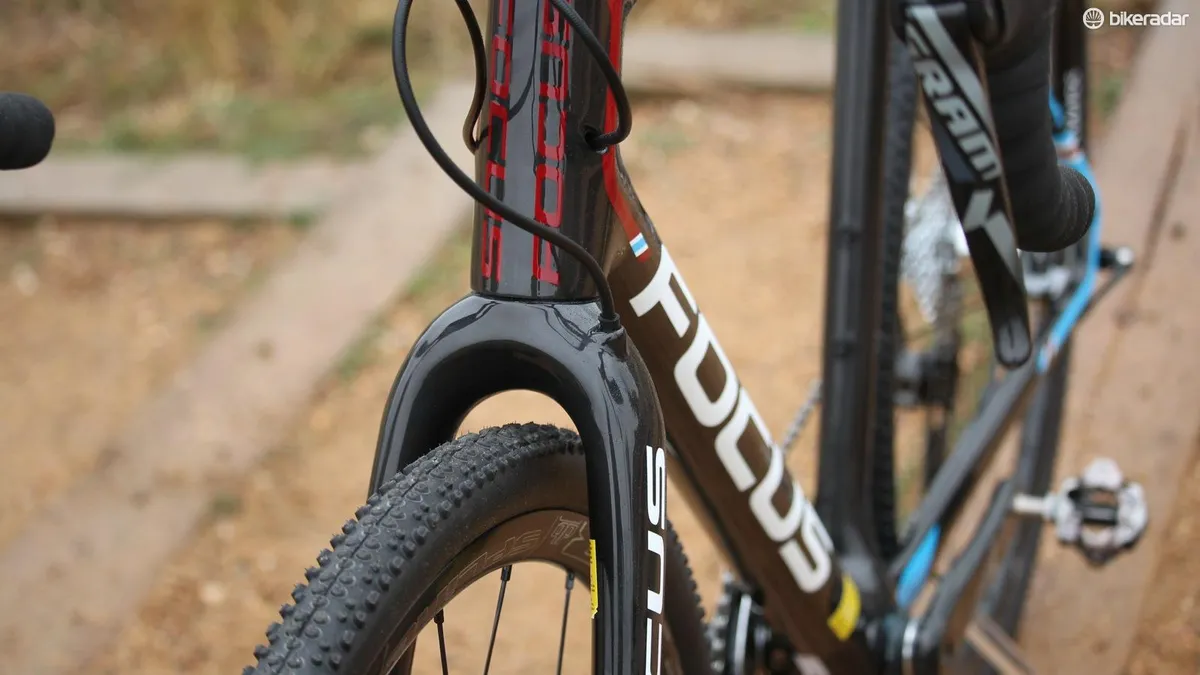
The Mares has the shortest stack of any bike our test crew has ridden this season, at 559mm for a 56. For those who like a low handlebar, you're golden. Most riders will be fine with a few spacers. If you like your bars high, definitely check your measurements against the Mares' geo chart.
I appreciated the 32t on the 11-32t cassette as much for general riding on dirt roads and trails as for the steep bits on a race course. It might not look as pro as a 28, but neither do I.
Another better-than-pro piece: the Schwalbe X One tubeless tires are marked as 33mm but measure a plump 35mm on the DT Swiss rims. Unless you are one of a few hundred UCI professionals on earth held to 33mm, then more girth is almost always better. In ’cross, your rubber is your suspension and your traction; I welcome every millimeter I can get and so should you.
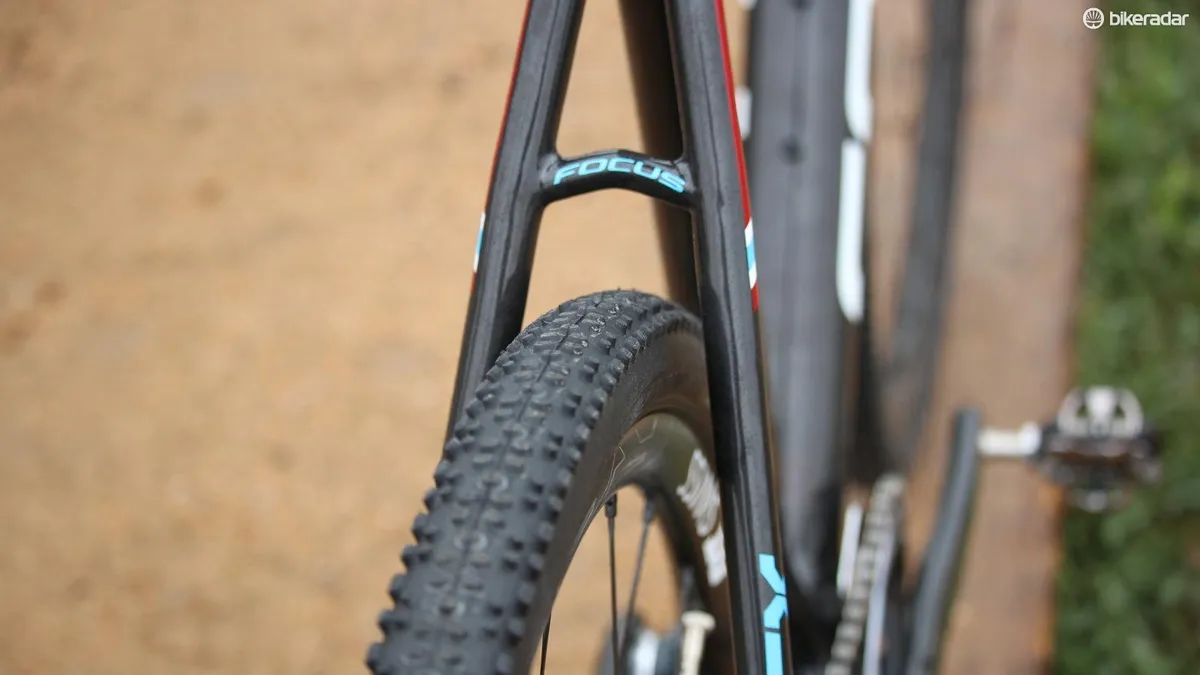
The Focus Mares Force 1 is an exceptional cyclocross race bike: easy and efficient to accelerate, calm when cornering or rattling over rough stuff, and packed full of smart rider-friendly details like RAT, tubeless and clean routing. If the low-stack works for you, I bet you'll love this bike.

